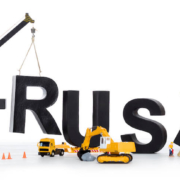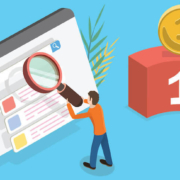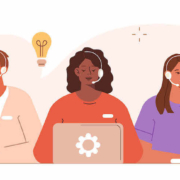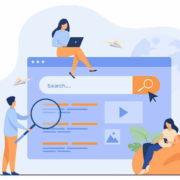How to Build Trust with Prospects: Tips for Senior Living Marketing Teams
Trust is an essential building block in any relationship, including those that the senior living marketing and sales teams have with prospective residents.
So, how do you build trust with prospects?
In this article, we’re going to discuss exactly that. Here are the topics we’ll be covering:
- Why building trust is necessary
- What you need to build before you can build trust with prospects
- Strategies for building trust
- How Senior Living SMART can help your teams build trust with prospects and residents alike
Why is trust necessary for brands and businesses?
Research firm Gartner has a great study on trust. First, it defines brand trust as “a customer’s ability to feel secure in the belief that a company will consistently follow through on its stated intentions to customers and others, particularly in times of difficulty.”
Second, Gartner’s research reveals that “81% of customers refuse to do business with or buy from a brand that they don’t trust, and 89% expect to disengage from a brand that breaches their trust.”
Even without these stats, we humans already know how much trust matters in relationships with family and friends. So it makes sense that we also crave trusting relationships with the people we do business with.
Before you can build trust with prospects, you need to build a culture of trust within your organization.
In order for marketing and sales teams to build trust with prospects, the teams have to already work in a genuine culture of trust within the community itself.
This means that . . .
- The C-suite has embraced a culture of trust, openness, honesty, and transparency. It’s not just talking the talk; upper management walks the walk.
- Middle-management/department heads embody what the C-suite has mandated and encourage trust-building within their own departments, across departments, and—most importantly—in every interaction with residents, prospects, and their respective families.
- All employees recognize how important trust is within the organization. It’s something they, too, believe in—and perhaps why they joined the organization in the first place.
This is true for any organization, but even more so in highly personal industries like senior living. So before you get into the strategies below about how to build trust with prospects, make sure an overall culture of trust exists within your company and in each community. If it doesn’t, you and your colleagues might need to start working on and/or encouraging top management to foster a culture of trust internally first.
How to build trust with prospects
Be human in your communications with them.
Which do you think will be more effective: a jargon-laced monologue delivered by a slick salesperson who is following a script? Think something like . . . “Our community has all the amenities a person could want and five-star dining and customer service.”
Or a sales rep who says, “Tell me what you’re looking for in a community. I can’t promise that ours will be ‘it’, but I can point you in the right direction if ours isn’t the right fit. And, of course, I’d be happy to give you a tour if we’re thinking this is a good match.”
The second one for sure, right? It’s just more . . . human. More real.
Always strive to be human, warts and all. Encourage everyone on your marketing and sales teams to be human whenever they communicate with prospects (whether in writing or in person).
So how do you sound more human? Here are some tips.
- Dial up your empathy. Consider the other person (the prospect, in this case). Forget the “pain points” you’re trying to “solve for” by getting them to move into your community. Stop and SEE the person. If you weren’t trying to sell them and were, instead, simply listening to them, how would you respond? What questions would you ask? How would you advise them?
- Don’t go through the motions. Sure, marketing to prospects is your job. But for the prospects, it’s a major life decision. Treat your prospects and the decisions they’re making with the reverence that both deserve. Listen actively. Don’t apply a formula or try to shoehorn a fellow human being into a particular package that you’re trying to sell.
- Go off script. Scripts are one of the worst things to ever happen to sales teams in any industry. Sure, we get that there are key points you need to remember to communicate about services and products. Fine. But unless you’re Meryl Streep or some other A-list actor, no one reading from a script sounds human. So toss the script. In fact, during sales training, have the reps practice how to handle different scenarios in an organic fashion. Coach them from there, not from some random place on a script. (And if the reps can’t deliver without a script, consider getting new sales reps.)
Keep in mind that this “be human” directive applies to everyone in every department within the community—activities, care, dining services, facilities, etc. Anyone who talks to prospects, residents, and their families should be focused on sounding human first.
Let others build trust on your behalf.
Which statement sounds more convincing:
- James says, “You can trust me.”
- Anita says, “I trust James 100%. He’s a great guy and really cares about his clients and what’s best for them.”
Or how about this:
- “ABC Senior Living is the perfect community that will meet your needs, even as your health changes.”
- “I’m so happy with my home in ABC Senior Living. The staff is wonderful, the food is delicious, and when my husband needed more care after an operation, they were able to help.”
This is why social proof—reviews, testimonials, and the like—is so important to building trust with prospects.
Make sure that you’re always . . .
-
- Reminding people—prospects, residents, and their families—to write reviews.
- Capturing happy moments with prospects and residents on video and sharing them on your website and social media.
- Thinking about how to use reviews and testimonials in key places on your website, like the home page, landing pages, contact pages.
- Monitoring what people are saying about your community on review sites and social media. Share and boost the good stuff. Address the negative reviews (more on this below).
- Being mindful of all the places you need social proof: website, social channels, Google Business Profile, print materials, advertising.
- Entering your community for relevant awards.
Always be transparent—even if the message isn’t positive.
It’s easy to be open and honest when you have nothing but good things to share—the awesome amenities, the made-from-scratch dinners, the active clubs.
Being transparent when the message isn’t so great is when real trust-building happens. No one is expecting perfection. What people crave is the truth. They crave transparency, not obfuscation. They want to know that if your community messes up in some way, it will acknowledge mistakes and clearly articulate the measures it’s taking to avoid the same mistakes in the future.
And here’s the thing: If there’s something that’s not-so-great about your community, the prospect will likely find out about it anyway—from a tour, online reviews, or negative press. Why not address the elephant in the room?
For example, did your community experience a recent COVID outbreak? How did you handle it? What measures has the community taken for disinfecting and tending to ill residents and staff? What new protocols and training have been implemented to avoid outbreaks moving forward? Who can people turn to if they have questions?
The last point is crucial. Make sure you have a point person who is capable of not only answering questions honestly, but also defusing tense conversations.
Don’t bury the message, either. For urgent matters, you can pin statements to your social media profiles. (The statement should include links to relevant pages on your website.) While you don’t need to lead with something negative on your home page, you could have something like “Update about COVID outbreak” as a courtesy link above the main menu and in the footer.
Remember, transparency should extend to current residents and employees as well. So many communities are focused on prospects, but they forget that their current residents and employees crave transparency, too. This all goes into building a culture of trust.
Be responsive to legitimate criticism and negative reviews.
You can’t control whether someone leaves a bad review. But how you respond is within your control. We’ll be doing a deeper dive in an upcoming blog post, but here are the broad strokes that you should keep in mind:
- Don’t defend or get defensive.
- Don’t sound robotic in your responses.
- Pay attention to the review’s substance.
- If something is broken, fix it.
Do the above, and you’ll go a long way toward building trust with prospects and current residents alike (and possibly even the person who wrote the negative review). Read more about reputation management.
Coach your teams on how to build trust with prospects.
This goes back to our earlier point that this needs to be a community-wide initiative—one that’s embraced by the C-suite and encouraged and practiced in every department from care staff to activities to marketing/sales to every department in between.
Remember, building trust is like growing a garden—it needs constant care and upkeep.
Providing useful training and coaching in all departments and at all levels is a must. Of course, how the training looks will vary depending on the department. For example, trust-building in the facilities department will be different than trust-building in the marketing and sales department.
We’re here to talk about the latter, so when it comes to trust-building, remember that you don’t need big conferences or retreats. Those things are fine to have, but a once- or twice-a-year retreat isn’t enough. You need to provide smaller doses and regular reminders, such as . . .
- Hosting an occasional “lunch and learn” on trust-building topics
- Sharing a relevant article
- Posting inspirational reminders where staff gathers (and swapping in new ones to keep them fresh)
- Offering coaching or mentoring services
Get in the habit of measuring trust within your community.
We know this article is all about prospects. But here’s the thing: Trust shouldn’t end there.
As prospects turn into residents, your community needs to deliver on what it promised them. Otherwise, the trust you built will be broken, and the resident you worked so hard to get will end up moving out, leaving you to start all over again.
So how do you measure trust within your community?
Here are three tried-and-true ways:
- Surveys. Use pulse surveys at regular intervals, including 30 days after move-in and every quarter. You should also conduct surveys when people move out. Survey questions should rotate to provide a holistic view of satisfaction and trust. For example, address quality of care, dining quality/choice, activities/engagement satisfaction, responsiveness to maintenance requests, etc.
- Reviews. Pay attention to reviews from family members for AL/ MC and reviews from residents for Active Adult/55+/IL. Look for patterns and themes in the feedback—this will serve as a good barometer of trust and satisfaction.
- Referrals. Resident and family referrals are gold. There is no better measure of someone’s trust and satisfaction than their personal recommendation. You should have a “make your friend your neighbor” type of referral program that includes an incentive (typically rent credit). High participation would be an excellent sign of trust in your community.
Discover how we can help your team build trust with prospects and residents alike.
Trust doesn’t happen overnight. It’s not a “thing” to be done or a box to check off. Trust-building will always be an ongoing process that morphs and grows (and sometimes recedes) and changes shape.
At Senior Living SMART, we know this. Get in touch and let’s discuss how we can help you and your team build trust with prospects.











